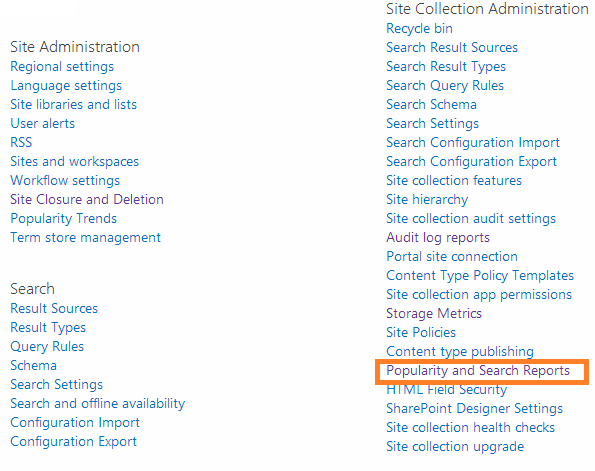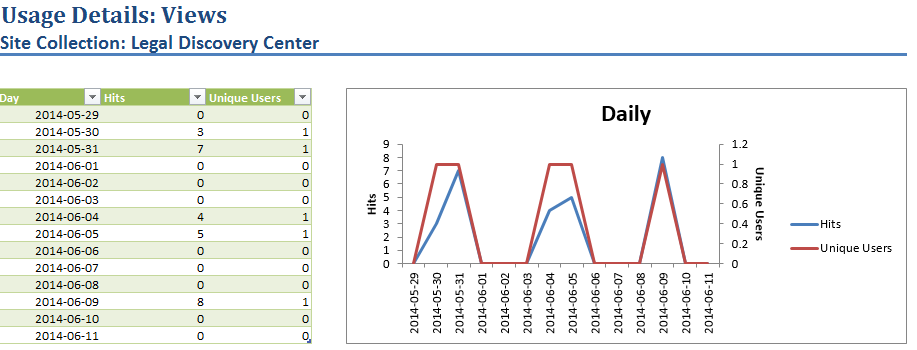Getting Your Organization to Use SharePoint and Office 365
This one is for all those SharePoint evangelists and implementers out there who are hard at work trying to improve their organization. You champions of collaboration who have deployed SharePoint and seek to show everyone the light of sharing and efficiency. You have worked hard getting SharePoint running and seen the usage start to rise. I salute you and your efforts.
But what if you are in your own version of Groundhog Day? Each day doing the same things, people repeating the same mistakes, the usage of your solution is slightly increasing but not at the pace it should be. Why can’t your users see the power of productivity you provided? Why are people asking questions like we have SharePoint? What is that?
Groundhog: SharePoint makes working with other people that easy!?
Getting hundreds or thousands of people using a new thing is no small task. It takes a while to learn new things and people are slow to change their ways. Focus on adoption. SharePoint is viral, but you need to get a critical mass of people that work together to start using it, then the rest of the team will follow. However in most organizations you have teams that mostly collaborate only with each other, so you need to identify these teams and get that critical mass.
Set goals and measure adoption
If you don’t know many people are actively using SharePoint, then you don’t know if your adoption promotion efforts are successful. First you need to have goals for adoption and measurable metrics to track your success. SharePoint has out of box analytics capabilities. A basic starting point is the number of hits and number of unique users for a site collection, you can see this in the site collection usage report by going to site collection settings and selecting Popularity and Search Reports. You can also view this report for a particular Site by going to Popularity Trends in Site Settings.
Here is an example usage report. Notice this was before any adoption efforts were put in place. It’s great to have a baseline starting point so you can compare the change over time.
Here is some more information:
View and download reports about service usage in Office 365
There are also more sophisticated analytics options you can integrate with SharePoint.
SharePoint 2013: How to Choose Between Web Analytics and Google Analytics
Webtrends and everything you need to know about SharePoint adoption
Keep it simple and easy
First deploy and advertise the basic capabilities of SharePoint that need little setup and no customization. For example first get people using OneDrive for Business. Train them to use OneDrive for Business instead of their local computer to store files. Then look at deploying basic un-customized team sites that anyone in the organization can provision as needed. The faster you offer the option to people, the quicker you will realize the benefits, even if it isn’t the highly customized repository of cat images and videos you have been dying to build for your company.
Setup an Intranet portal with search
People occasionally need to access corporate resources such as new employee information, W2s, and employment information. If you can setup a single portal that is useful to everyone and everyone knows it exists, people will use it. Since you are linking people to important tasks they will use it, but ensure the experience is simple and easy. Tie that in with SharePoint search so when people can’t browse to what they are looking for, they can just search. They will start to see they can find useful content in documents and team sites and want to figure out how they can make their content available too. They will run searches and see people suggestions, click on those people and see the OneDrive for Business sites, then look into getting their own OneDrive for Business setup.
Give them a carrot and advertise
Create one page info documents to explain how to do basic things and why. For example in a short article highlight the value of coauthoring instead of emailing attachments around. Show people the carrots that will make their work life easier, then they will be motivated to learn and use it. Create simple and easy training documents and videos and share them with people. Use email promotions, a newsletter of SharePoint tips & tricks, and articles on the company intranet home page to promote using SharePoint.
Go viral by getting an advocate from each team
Select advocates from the teams that are using your SharePoint deployment and teach them about the benefits so they can spread the good word and help others on their team start using SharePoint. Once a few people on the team start relying on SharePoint, the rest of the team follows along and sees the benefit. Plus they have a point of contact that is an expert on their team that they can ask questions of. Involve your users with your solution design and implementation. They will be the ones using it right? Have them involved in every stage of the implementation from planning to pre-production. Teach these people cool ways to be more productive with SharePoint. Check in with them occasionally and see how they are doing. Encourage them to teach the rest of their team about SharePoint and why they should be using it. You can’t train 1,000 people, but you can keep in touch with 50 people who work with 50 other people.
The formula is simple: end groundhog day + measure success + report results to boss = better ROI, more productive organization, and you are a hero. You’re welcome.
Quentin Christensen, Program Manager


